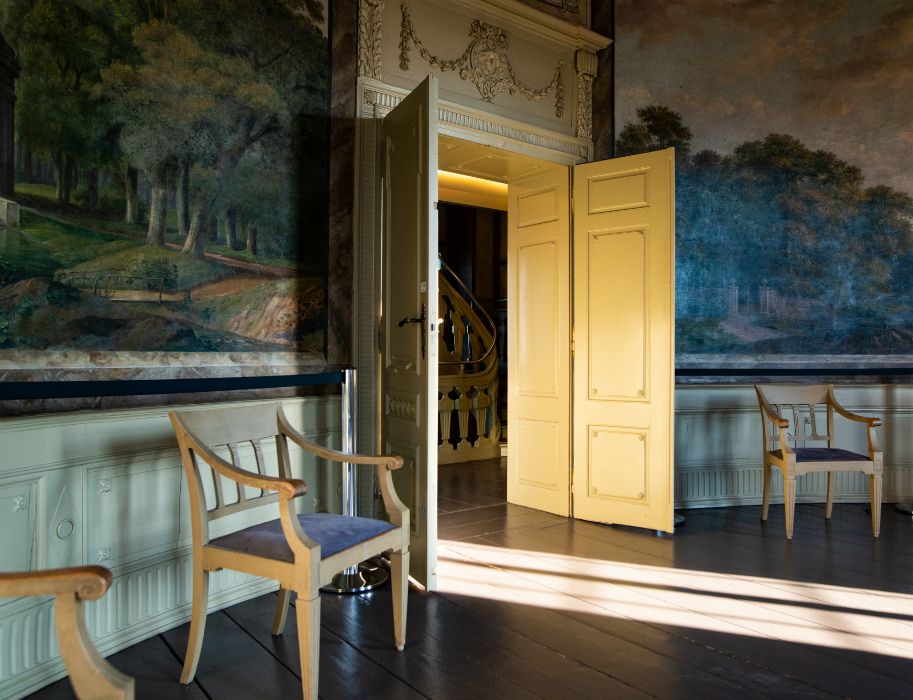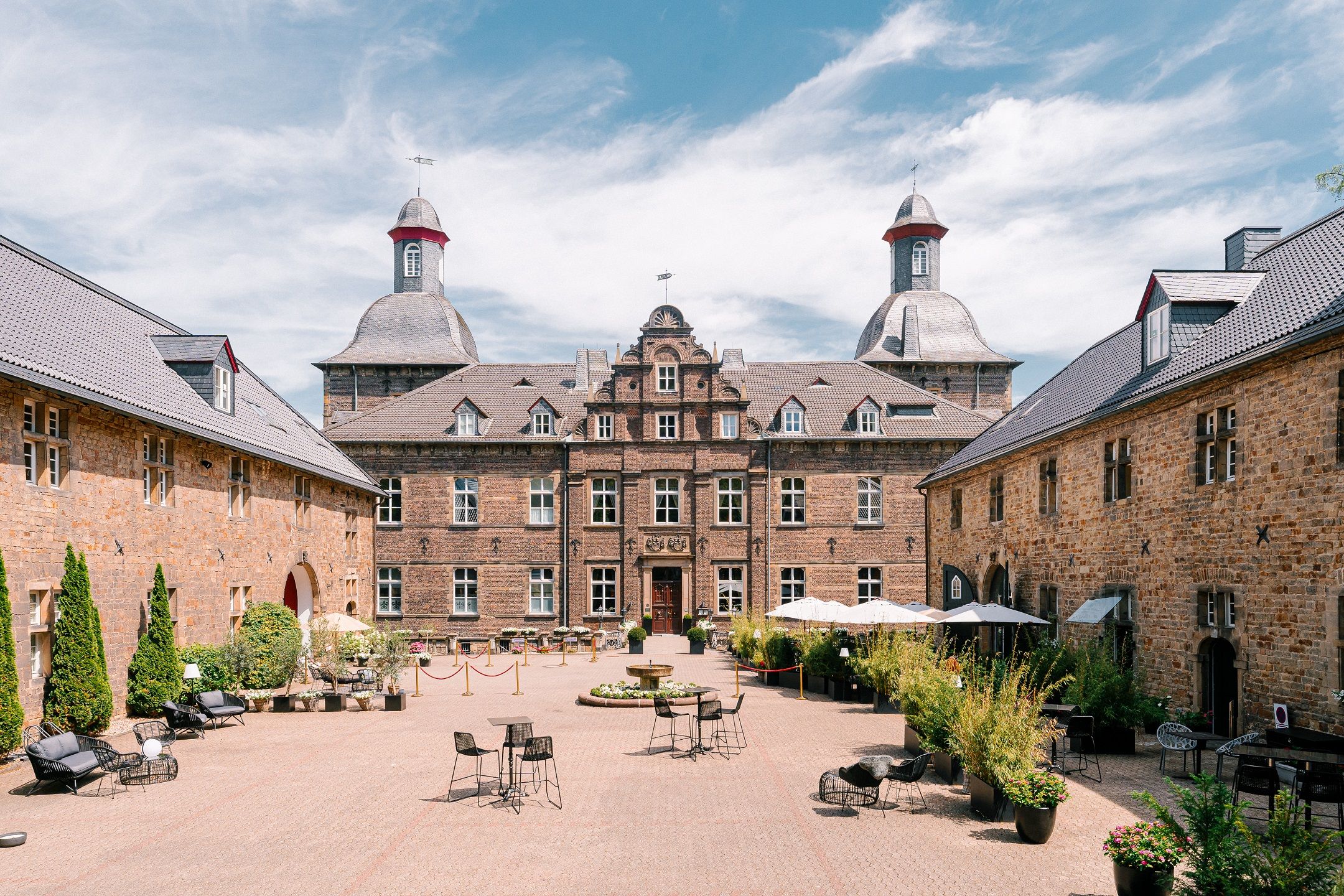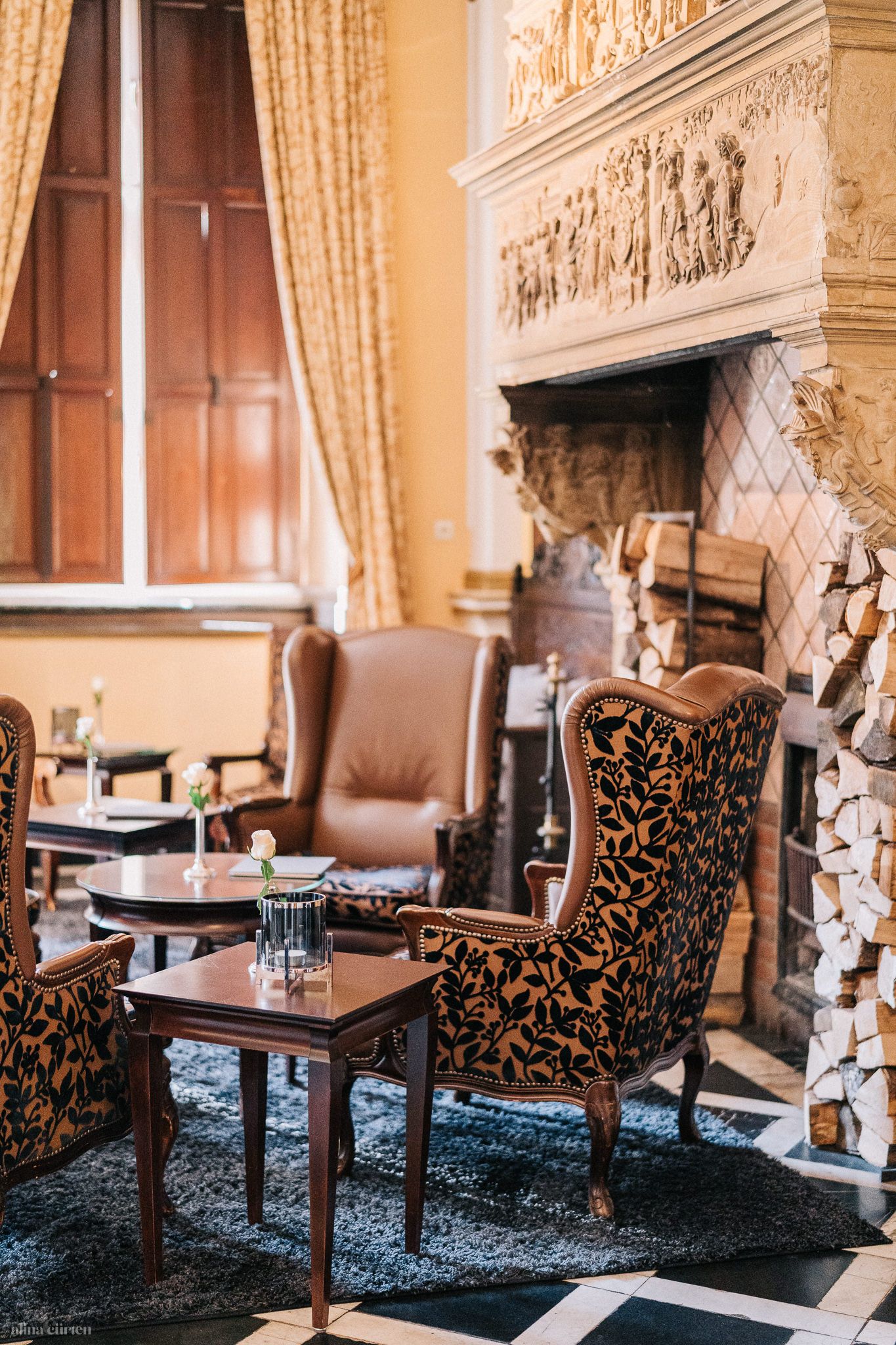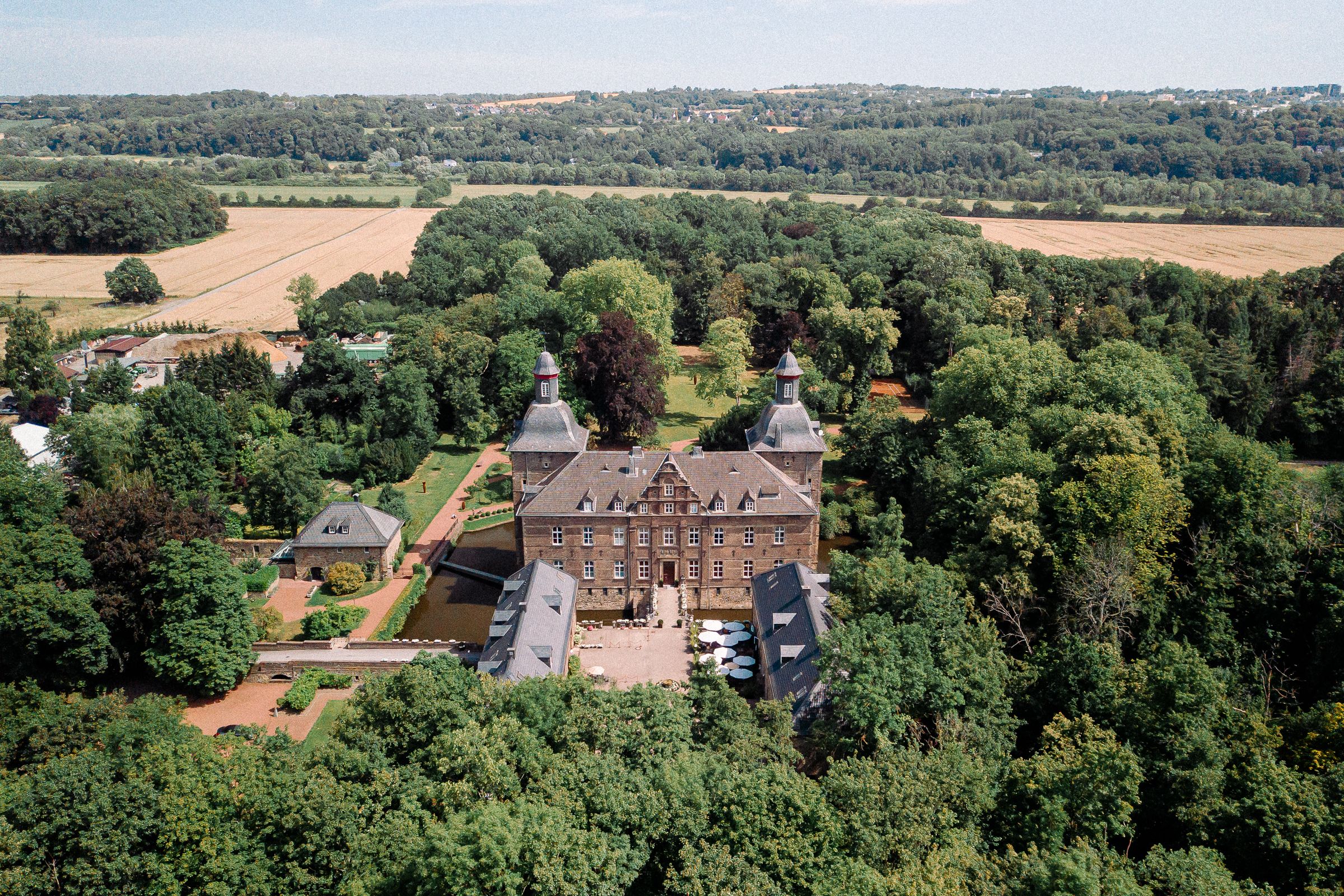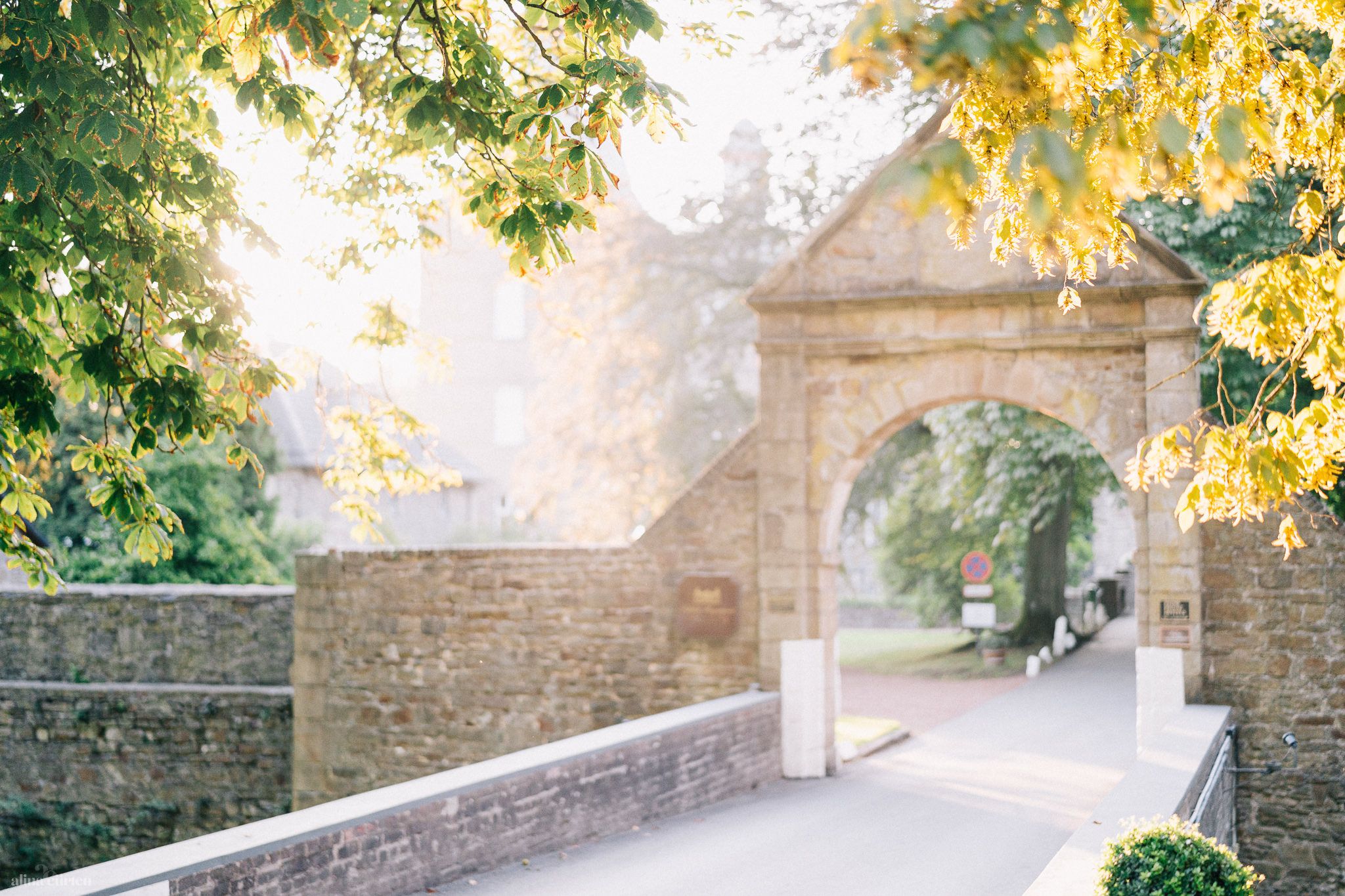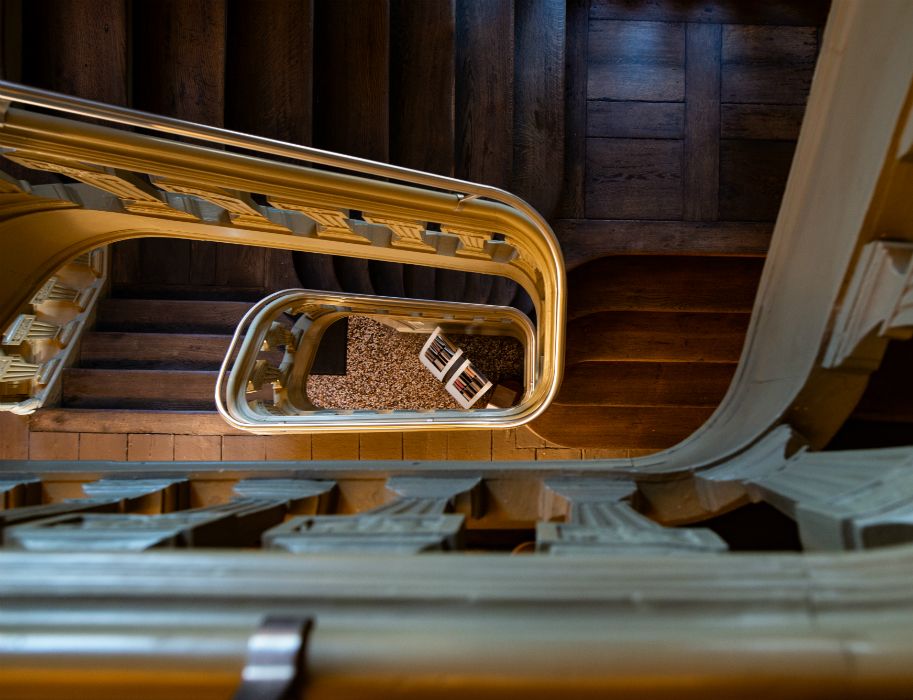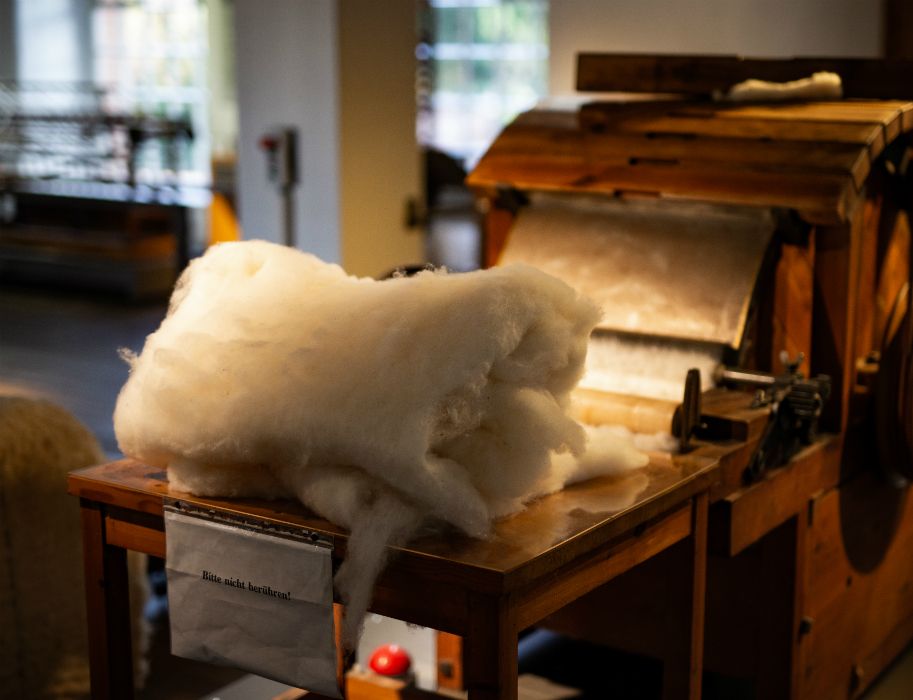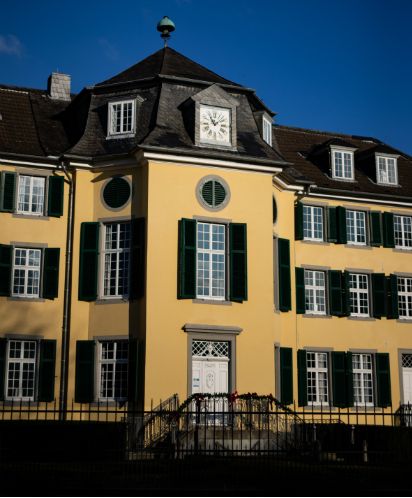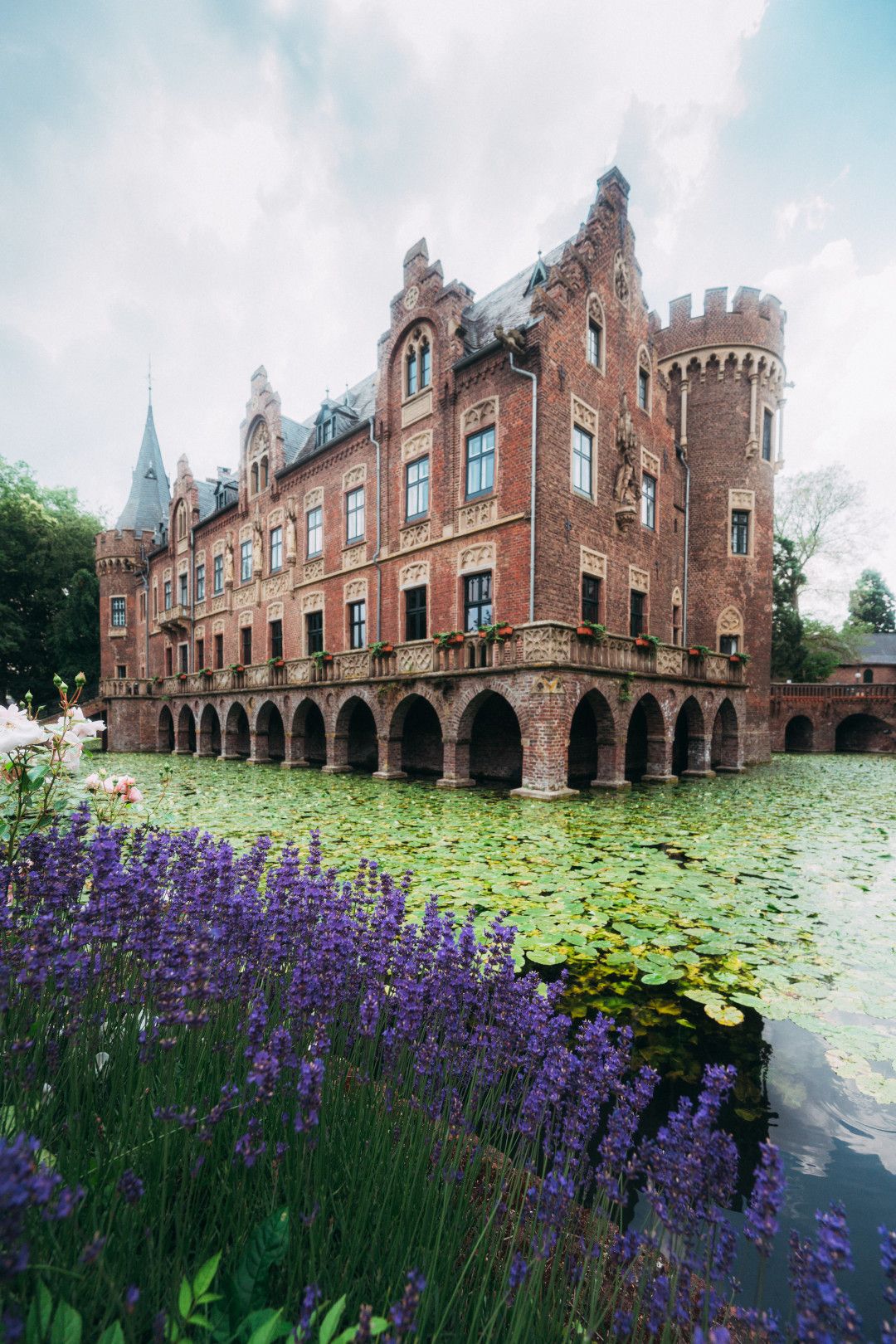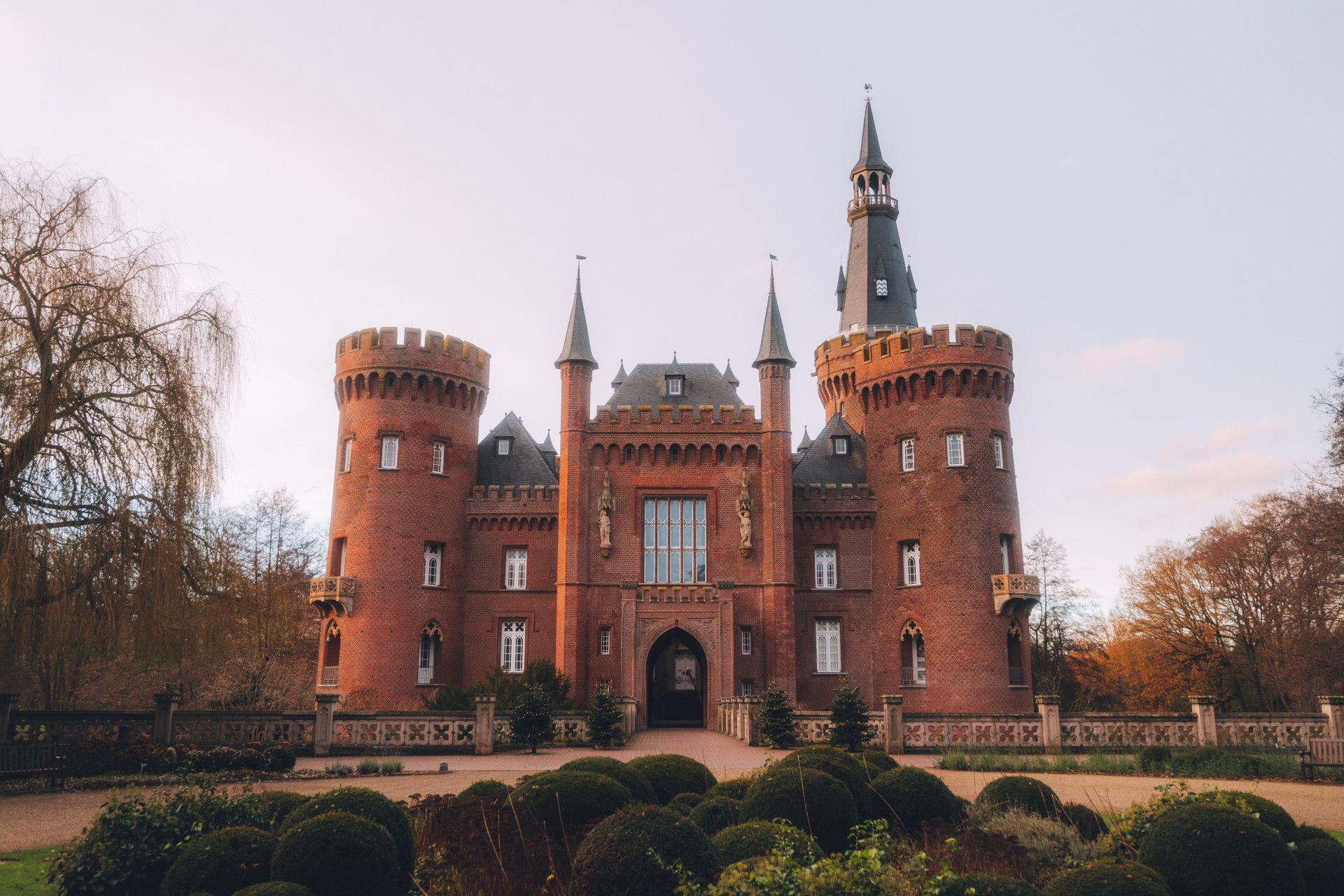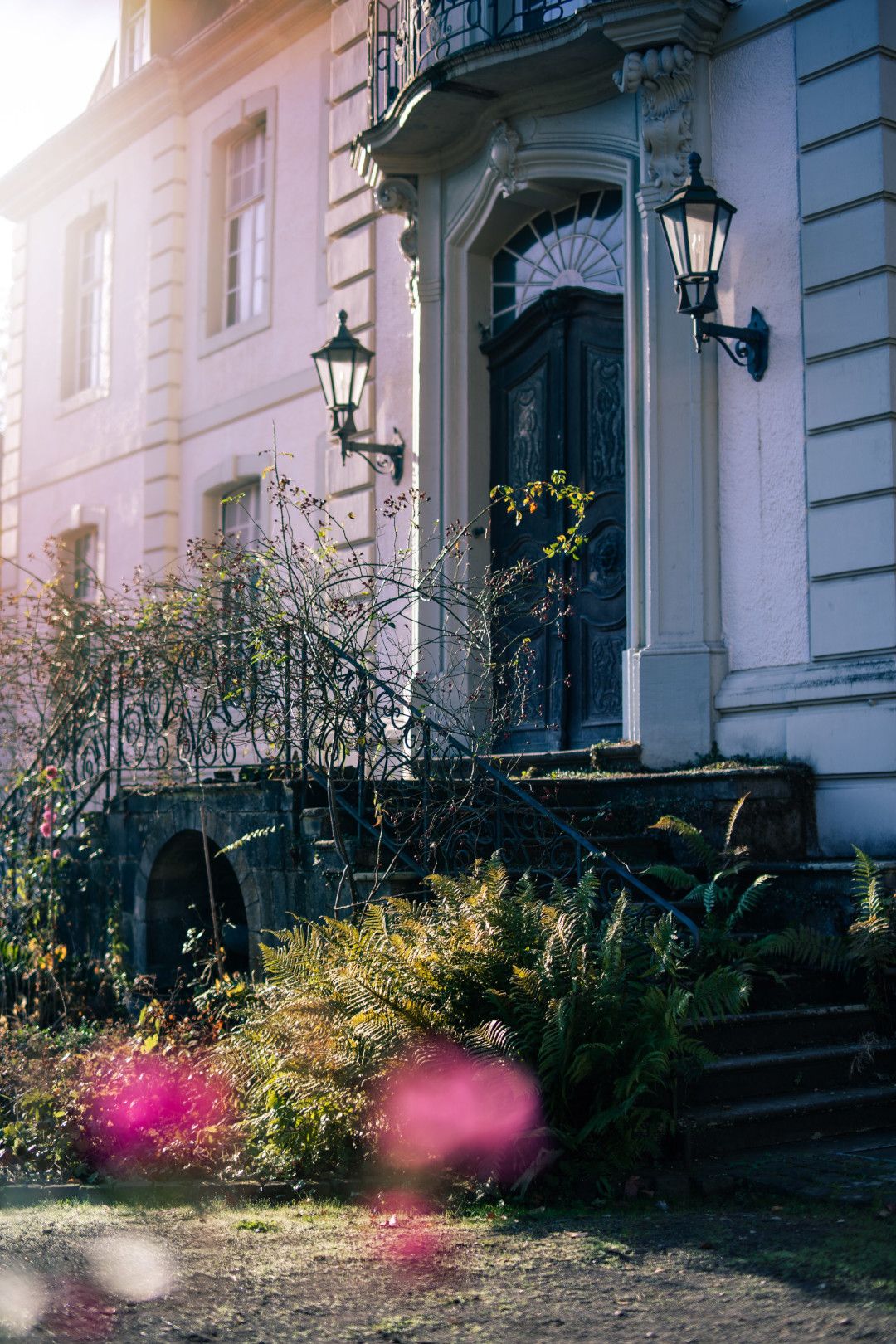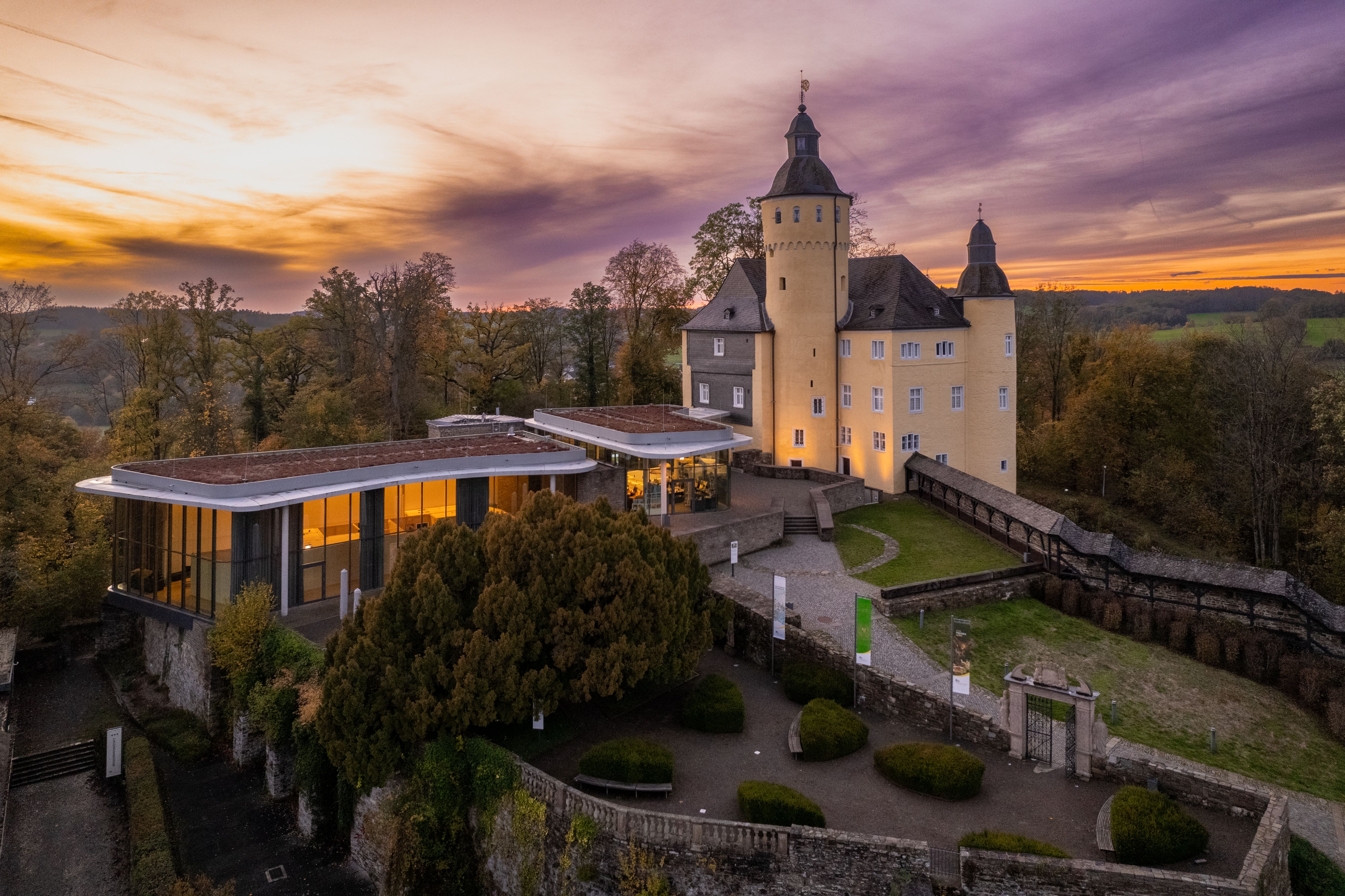Toads and clothes, machines, power and water: both the history of Hugenpoet Castle in Essen and the Cromford manor house in Ratingen are closely linked to the industrial textile history of the Rhine and Ruhr. Built close to the water, they offered their owners not only the very best residential location, but above all favourable conditions for their entrepreneurial activities. Today they offer - here as a hotel, there as a museum - exciting insights into upper middle-class life in the 18th and 19th centuries.
Although located in the Ruhr Area, mining never played a central role in Essen-Kettwig. Instead, the cloth industry dominated until the 1970s. This may be one of the reasons why the von Fürstenberg family moved their residence to Hugenpoet Castle in 1879, which had previously been destroyed and rebuilt several times. Incidentally, its name has nothing to do with poetry - contrary to what one might think when looking at the enchanting grounds - but is derived from the words Hugen (toad) and Poet (pond). The castle is still surrounded by water today. The guests of the hotel run by Maximilian Freiherr von Fürstenberg may not care. At Hugenpoet, they enjoy a few days of luxury in a historic ambience and peaceful location.
